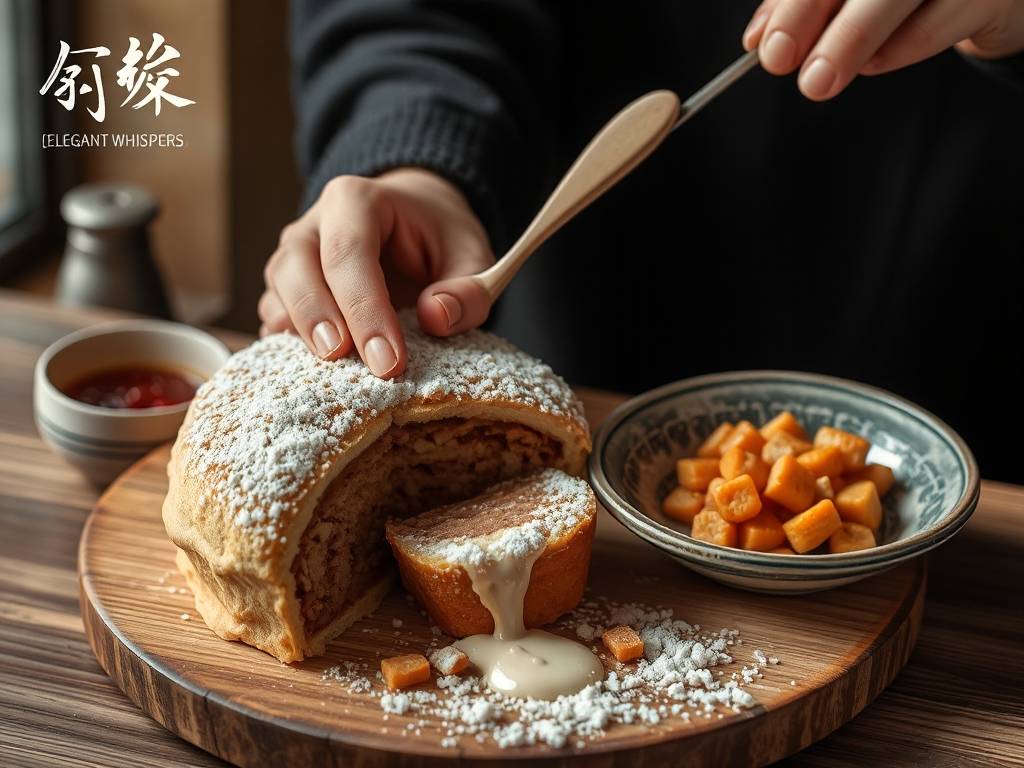The Art of Panna Cotta: Mastering the Perfect Cream and Gelatin Dessert
Panna cotta, which translates to "cooked cream" in Italian, is one of the most elegant yet simple desserts to grace the culinary world. Its delicate texture, subtle sweetness, and versatility make it a favorite among both home cooks and professional chefs. At its core, panna cotta is a harmony of two key components: cream and gelatin. When combined and chilled to perfection, these ingredients transform into a silky, melt-in-your-mouth treat that can be customized in countless ways. In this guide, we will explore the step-by-step process of making panna cotta, from selecting the right ingredients to achieving the ideal set.
Understanding the Ingredients
Before diving into the recipe, it’s essential to understand the role of each ingredient. The foundation of panna cotta is heavy cream, which provides the rich, luxurious mouthfeel that defines this dessert. For the best results, use high-fat cream (at least 35% milkfat), as it ensures a smooth and creamy consistency. Lower-fat alternatives can be used, but they may compromise the dessert’s signature richness.
Sugar is another critical component. It not only sweetens the dessert but also contributes to its texture. Granulated sugar is the most common choice, but other sweeteners like honey or maple syrup can be used for a unique flavor profile. Just keep in mind that liquid sweeteners may slightly alter the consistency.

Gelatin is the magic ingredient that sets the panna cotta. It acts as a gelling agent, transforming the liquid cream mixture into a firm yet tender dessert. Gelatin is available in powder or sheet form, and both work well. However, sheet gelatin is often preferred by professionals for its clarity and smooth texture. If using powdered gelatin, ensure it is bloomed properly to avoid lumps.
Finally, flavorings play a significant role in customizing panna cotta. Vanilla is the classic choice, but you can experiment with ingredients like citrus zest, spices, or even floral notes like lavender or rose. For a more decadent twist, chocolate, coffee, or fruit purees can be incorporated.
Step-by-Step Guide to Making Panna Cotta
Step 1: Bloom the Gelatin
The first step is to bloom the gelatin, which means hydrating it in cold water. If using powdered gelatin, sprinkle it evenly over a small amount of cold water (usually about 2-3 tablespoons per packet). Let it sit for 5-10 minutes until it becomes spongy and absorbs the water. For sheet gelatin, submerge the sheets in cold water for the same amount of time until they soften. Blooming ensures the gelatin dissolves smoothly into the cream mixture without clumping.
Step 2: Heat the Cream and Sugar
In a saucepan, combine the heavy cream and sugar over medium heat. Stir gently until the sugar dissolves completely. Avoid bringing the mixture to a boil; instead, heat it until it is just warm enough to dissolve the sugar and melt the gelatin later. Overheating can cause the cream to develop a cooked flavor and may affect the texture of the final dessert.
Step 3: Incorporate the Gelatin
Once the cream mixture is warm, remove it from the heat. Squeeze any excess water from the bloomed gelatin (if using sheets) or add the bloomed powdered gelatin directly to the warm cream. Stir continuously until the gelatin is fully dissolved. This step is crucial; if the gelatin isn’t completely incorporated, the panna cotta may not set properly or could have a grainy texture.
Step 4: Add Flavorings
At this stage, add your chosen flavorings. For vanilla panna cotta, scrape the seeds from a vanilla bean or add vanilla extract. If using citrus zest or spices, infuse them into the cream mixture by letting it steep for a few minutes off the heat. Strain the mixture if necessary to remove any solid particles, ensuring a smooth finish.
Step 5: Pour into Molds
Lightly grease your serving molds or ramekins with a neutral oil (like vegetable or canola oil) to make unmolding easier. Pour the cream mixture into the molds, leaving a little space at the top if you plan to add a sauce or garnish later. Tap the molds gently on the counter to remove any air bubbles.
Step 6: Chill Until Set
Cover the molds with plastic wrap and refrigerate for at least 4-6 hours, or preferably overnight. The panna cotta needs time to set properly; rushing this step can result in a dessert that is too soft or unevenly set. The ideal temperature for chilling is between 36°F and 40°F (2°C to 4°C).

Tips for Perfect Panna Cotta
- Avoid Overheating: Never let the cream mixture boil, as this can cause the gelatin to lose its setting power and result in a rubbery texture.
- Strain the Mixture: For an ultra-smooth texture, strain the cream mixture through a fine-mesh sieve before pouring it into the molds. This removes any undissolved gelatin or flavoring particles.
- Experiment with Textures: For a lighter version, substitute part of the cream with buttermilk, yogurt, or coconut milk. Keep in mind that these alternatives may require adjusting the amount of gelatin.
- Unmolding Tips: To unmold the panna cotta, dip the bottom of the mold in warm water for a few seconds, then place a plate on top and invert it. Give it a gentle shake if needed.
Serving Suggestions
Panna cotta is incredibly versatile when it comes to serving. Classic pairings include fresh berries, fruit coulis, or a drizzle of caramel or chocolate sauce. For a more sophisticated presentation, garnish with edible flowers, mint leaves, or a sprinkle of crushed nuts. If you prefer, serve the panna cotta directly in the glass or bowl it was chilled in, eliminating the need for unmolding.
Common Mistakes and How to Avoid Them
- Lumpy Texture: This usually occurs when the gelatin isn’t fully dissolved. Always ensure the cream mixture is warm enough to melt the gelatin completely, and stir thoroughly.
- Too Firm or Rubbery: Using too much gelatin is the culprit here. Follow the recipe measurements carefully, and remember that gelatin strength can vary by brand.
- Not Setting: If the panna cotta doesn’t set, it may be due to insufficient gelatin or not chilling it long enough. Always allow enough time for the dessert to firm up in the refrigerator.
Conclusion
Making panna cotta is a rewarding experience that combines simplicity with elegance. By mastering the balance between cream and gelatin, and paying attention to details like temperature and chilling time, you can create a dessert that is both visually stunning and delicious. Whether you stick to the classic vanilla or experiment with bold flavors, panna cotta is sure to impress. So, gather your ingredients, embrace the process, and enjoy the creamy, delicate delight that is panna cotta.






发表评论